Pastel Lesser Clown Ball Python For Sale
$999.99
WE HAVE A PASTEL LESSER CLOWN BALL PYTHON FOR SALE. HERE ARE SOME HIGHLIGHTS:
- Python regius
- Captive Bred
- Male
- Approximately 45 Inches In Length
- Roughly 1289 Grams And Growing
- Very Powerful 3 Gene Male To Add To Any Breeding Arsenal
- Feeding On Live Medium Rats Weekly
- Ball Pythons Are Native To Central And Western Africa And Thrive In These Warm, Tropical Areas
- With Proper Care And Setup These Snakes Can Live 20 – 25 Years In Captivity
- Great For A First Time Keeper As Well As An Experienced Breeder
- When Hatching Out Of The Egg They Can Be As Small As 10 Inches And Grow To Be 5 Feet
Pastel Lesser Clown Ball Python
The Pastel Lesser Clown Ball Python is an extraordinary morph of the ball python species, celebrated for its unique and captivating appearance. This particular morph stands out due to its vibrant coloration and intricate patterns, making it a favorite among reptile enthusiasts and breeders alike. The Pastel Lesser Clown Ball Python combines the bright, golden hues of the Pastel gene with the reduced pattern and intense yellow tones of the Lesser gene, all interwoven with the Clown gene’s distinctive and striking pattern, creating a visually stunning reptile.
Ball pythons, scientifically known as Python regius, are native to the grasslands and savannas of West and Central Africa. They are renowned for their docile nature and manageable size, typically growing between three to five feet in length. This species is particularly known for its defensive behavior of curling into a tight ball when threatened, hence the name “ball python.” Their placid temperament and relatively simple care requirements have made them one of the most popular choices for both novice and experienced reptile keepers.
The Pastel Lesser Clown morph, with its striking visual appeal, has garnered significant attention within the reptile community. The blending of three distinct genetic traits results in a morph that is not only beautiful but also highly sought after. The Clown gene, in particular, adds a layer of intrigue and complexity to the snake’s appearance, with its characteristic reduced pattern and bold, contrasting colors.
Overall, the Pastel Lesser Clown Ball Python highlights the fascinating diversity within the ball python species. Its unique combination of colors and patterns, coupled with the species’ inherent gentle nature, makes it a truly remarkable and captivating pet. As we delve deeper into the various aspects of this morph, we will explore its genetics, care requirements, and the reasons behind its growing popularity in the reptile community.
Genetics and Breeding
The Pastel Lesser Clown Ball Python is a captivating morph resulting from the intricate interplay of three distinct genetic traits: pastel, lesser, and clown. Each of these genes contributes unique characteristics that, when combined, create the striking appearance of this morph.
The pastel gene is a co-dominant trait known for its ability to lighten and intensify the colors of a ball python. This gene typically enhances the brightness of the scales, giving the snake a more vibrant and vivid appearance. Pastel ball pythons often have a cleaner pattern with reduced black pigmentation and increased yellow hues.
The lesser gene is another co-dominant trait that further influences the snake’s coloration and pattern. Lesser ball pythons are characterized by their lighter tones, often exhibiting a more subdued and smooth pattern. The lesser gene tends to reduce the contrast between the snake’s markings, resulting in a more unified and elegant look.
The clown gene, in contrast, is a recessive trait that significantly alters the pattern and color of the ball python. Clown ball pythons are known for their distinctive pattern, which includes a reduced and aberrant pattern with prominent head markings. The clown gene often produces a cleaner, more defined look with a unique and striking appearance.
When these three genes—pastel, lesser, and clown—are combined, the result is the Pastel Lesser Clown Ball Python. This morph showcases the enhanced brightness and vividness of the pastel gene, the smooth and elegant pattern of the lesser gene, and the distinctive and striking pattern of the clown gene.
Breeding ball pythons to produce specific morphs, such as the Pastel Lesser Clown, involves a careful selection of breeding pairs that carry the desired genetic traits. Breeders must understand the inheritance patterns of co-dominant and recessive genes to predict the outcomes of their pairings. By selectively breeding individuals that exhibit the pastel, lesser, and clown traits, breeders can produce offspring that display the combined characteristics of these genes, resulting in the stunning Pastel Lesser Clown Ball Python.
Physical Characteristics
The Pastel Lesser Clown Ball Python is a visually striking reptile, known for its unique and captivating appearance. This morph combines the distinct traits of the Pastel, Lesser, and Clown genes, resulting in a snake that is truly one-of-a-kind. The coloration of the Pastel Lesser Clown is a harmonious blend of soft, pastel hues and vibrant contrasts. The base color typically ranges from a creamy yellow to a light brown, accentuated by rich, darker markings.
One of the most notable features of this morph is its intricate pattern. The Clown gene contributes to a bold, reduced pattern that often includes teardrop-shaped markings along the sides and a highly defined dorsal stripe. These patterns are further enhanced by the Lesser gene, which adds a layer of brightness and clarity to the overall appearance. The Pastel gene introduces a layer of vibrancy, making the colors appear more vivid and giving the snake a glowing, almost ethereal quality.
In addition to its stunning coloration and pattern, the Pastel Lesser Clown Ball Python also exhibits some unique physical traits. The head stamp, a characteristic feature of the Clown morph, is particularly prominent in this combination. This distinctive marking on the top of the head often resembles a crown or a mask, adding to the snake’s regal appearance. The eyes are another striking feature, typically bright and alert, with a golden or coppery sheen that complements the snake’s overall color palette.
Overall, the Pastel Lesser Clown Ball Python is a remarkable example of selective breeding, showcasing the beauty and diversity that can be achieved within the species. Its unique blend of coloration, pattern, and physical traits make it a favorite among reptile enthusiasts and collectors alike, offering a captivating glimpse into the world of ball python morps.
Habitat and Enclosure Requirements
Creating an ideal habitat for a Pastel Lesser Clown Ball Python is crucial to its health and well-being. Understanding the environmental requirements of this unique snake species ensures that it thrives in captivity. The enclosure should be spacious enough to allow the python to move freely. A tank size of 40 gallons is recommended for an adult Ball Python, providing ample room for exploration and exercise.
Temperature regulation is a critical aspect of maintaining a suitable habitat. The enclosure should have a thermal gradient, with a warm side kept at 88-92°F and a cooler side maintained at 78-80°F. This gradient allows the snake to thermoregulate by moving between warmer and cooler areas as needed. Utilize heat lamps, under-tank heaters, or ceramic heat emitters to achieve the desired temperatures. Ensure that the heat sources are regulated with thermostats to prevent any risk of overheating.
Humidity is another essential factor for the Pastel Lesser Clown Ball Python’s enclosure. A humidity level of 50-60% is ideal, with occasional spikes up to 70% during shedding periods. This can be maintained by misting the enclosure regularly and using a substrate that retains moisture, such as coconut husk or cypress mulch. A hygrometer can help monitor the humidity levels to ensure they stay within the appropriate range.
Substrate choice is important not only for humidity retention but also for providing a comfortable and naturalistic environment. Coconut husk, cypress mulch, and aspen shavings are all suitable options. Avoid substrates like cedar or pine, as they can be harmful to the snake.
Providing hiding spots within the enclosure is essential for the snake’s sense of security. Multiple hides should be placed in both the warm and cool areas of the tank. These can be commercially bought reptile hides or simple structures made from non-toxic materials. Additionally, incorporating branches, plants, and other decorative elements can mimic the snake’s natural habitat, making it feel more at home.
Diet and Feeding
The dietary needs of the Pastel Lesser Clown Ball Python are similar to those of other ball python morphs. These snakes are primarily carnivorous, with a diet that consists mainly of rodents. Appropriately sized prey items, such as mice or rats, should be offered based on the snake’s age, size, and weight. Juvenile Pastel Lesser Clown Ball Pythons typically require smaller prey, such as pinkie mice, while adults may require larger prey like adult mice or small rats.
Feeding frequency is another critical aspect of maintaining a healthy diet for your Pastel Lesser Clown Ball Python. Juveniles should be fed once every 5-7 days to support their rapid growth, while adults can be fed every 10-14 days. Monitoring the snake’s body condition is essential in determining if adjustments to the feeding schedule are necessary. An underweight snake may need more frequent feedings, whereas an overweight snake may benefit from a slightly extended interval between meals.
Common feeding issues can arise, such as refusal to eat. This can be due to stress, improper enclosure conditions, or health problems. Ensuring the enclosure maintains the appropriate temperature and humidity levels can help alleviate some of these issues. Additionally, providing a secure and comfortable environment will encourage regular feeding. If the snake continues to refuse food, a consultation with a reptile veterinarian may be necessary to rule out underlying health concerns.
Tips for ensuring a healthy diet include offering prey that is no larger than the widest part of the snake’s body and avoiding live prey to prevent potential injuries. Pre-killed or frozen-thawed rodents are recommended, as they minimize risk and are readily accepted by most Pastel Lesser Clown Ball Pythons. Regularly monitoring the snake’s weight and overall health will help in making necessary dietary adjustments, ensuring your snake thrives.
Health and Common Issues
The health and well-being of the Pastel Lesser Clown Ball Python are paramount for any responsible owner. Understanding common health issues and their signs can significantly enhance the quality of life for these reptiles. One frequent health concern is respiratory infections, which can manifest as wheezing, labored breathing, and mucus around the nostrils. These infections often result from improper humidity levels or cold temperatures within the enclosure. Maintaining an optimal environment with appropriate temperature and humidity is crucial to prevent such issues.
Mites are another common problem that can affect the Pastel Lesser Clown Ball Python. These tiny parasites are often visible around the eyes and under the scales, causing significant discomfort. Signs of mite infestation include constant soaking in the water bowl, frequent rubbing against objects, and visible black or red specks on the snake’s body. Regular cleaning of the enclosure and quarantine of new additions to the collection can help mitigate the risk of mite infestations.
Shedding problems, also known as dysecdysis, can occur if the snake is not kept in the right humidity levels. Signs include retained eye caps, incomplete shedding, and dry, flaky skin. Ensuring the enclosure has a humidity level of around 50-60% and providing a moist hide can facilitate a smooth shedding process. Additionally, providing a rough surface in the enclosure can help the snake shed its skin more effectively.
Recognizing the signs of illness early can be crucial. Lethargy, loss of appetite, and sudden changes in behavior are common indicators that something may be wrong. Regular health checks and prompt veterinary care when issues arise cannot be overstated. Preventative measures such as maintaining a clean environment, providing proper nutrition, and monitoring the snake’s overall condition are essential for the Pastel Lesser Clown Ball Python’s health.
Handling and Temperament
The Pastel Lesser Clown Ball Python is renowned for its generally docile and calm temperament, making it an ideal pet for both novice and experienced reptile enthusiasts. This ball python breed is known for its consistent behavior, rarely displaying aggression when handled correctly. Its manageable size, typically reaching three to five feet in length, further contributes to its suitability as a household companion.
When it comes to handling, the Pastel Lesser Clown Ball Python exhibits a non-defensive demeanor, which can be attributed to its natural predisposition and selective breeding practices. Initial interactions should be gentle and gradual to ensure that the snake becomes accustomed to human contact. It is advisable to support the snake’s body fully and avoid sudden movements, which could startle it. Regular, calm handling sessions will help in building trust and reducing any potential stress for the snake.
Acclimating the Pastel Lesser Clown Ball Python to human interaction involves patience and consistency. Begin by allowing the snake to get used to your presence. This can be achieved by placing your hand in its enclosure without attempting to pick it up, thus enabling it to familiarize itself with your scent. Over time, gentle handling can be introduced in short durations, gradually increasing as the snake becomes more comfortable.
It’s crucial to recognize the signs of stress in the Pastel Lesser Clown Ball Python, such as hissing, rapid movements, or a tight balling posture. If these signs are observed, provide the snake with a break from handling and ensure that its environment is optimal for its needs. A well-maintained habitat with proper temperature, humidity, and hiding spots can significantly contribute to the snake’s overall well-being and temperament.
In conclusion, the calm and manageable nature of the Pastel Lesser Clown Ball Python makes it a delightful pet for enthusiasts. By understanding and respecting its behavior, providing a suitable environment, and gradually acclimating it to handling, owners can ensure a harmonious and enriching experience with their reptilian companion.
Conclusion and Resources
The Pastel Lesser Clown Ball Python presents a captivating blend of genetic traits that make it a standout among ball python morphs. Its vibrant pastel hues combined with the intricate clown pattern create a visually striking appearance that is highly sought after by reptile enthusiasts. Throughout this blog post, we’ve explored the unique attributes of this morph, its origins, and care requirements, emphasizing the importance of proper husbandry to ensure a healthy, thriving pet.
One of the key qualities that set the Pastel Lesser Clown Ball Python apart is its genetic makeup, which involves the combination of three distinct genes: pastel, lesser, and clown. This genetic trio not only enhances the coloration but also contributes to the overall pattern and aesthetic appeal. For those interested in breeding, understanding the genetic implications and potential outcomes is essential for producing high-quality offspring.
For readers eager to delve deeper into the world of ball python morphs, several resources can provide valuable information and support. Reputable breeders such as XYZ Reptiles and Morph Market offer a wide selection of ball python morphs, including the Pastel Lesser Clown. These breeders also provide insights into the ethical breeding practices and genetic backgrounds of their snakes, ensuring that potential buyers make informed decisions.
Comprehensive care guides, such as those available on websites like Reptifiles and The Spruce Pets, offer detailed advice on habitat setup, feeding, and health monitoring. These guides are invaluable for both new and experienced keepers, helping them maintain the well-being of their ball pythons. Additionally, online communities and forums, including Ball-Pythons.net and Reddit’s r/ballpython, serve as excellent platforms for sharing experiences, seeking advice, and connecting with fellow enthusiasts.
By leveraging these resources, readers can continue to expand their knowledge and appreciation of the diverse and fascinating world of ball python morphs. The Pastel Lesser Clown Ball Python, with its unique characteristics and striking appearance, remains a testament to the beauty and complexity of reptile genetics.
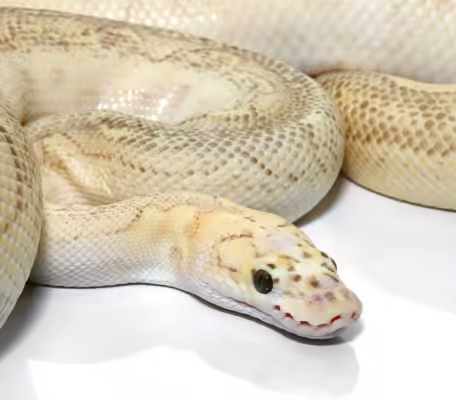





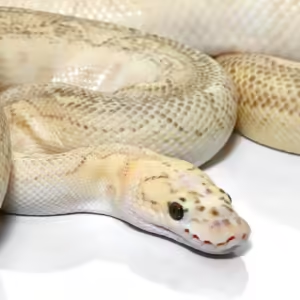


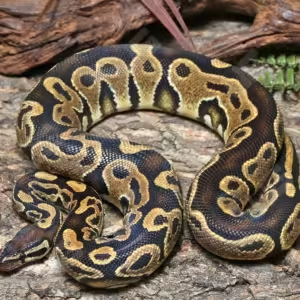






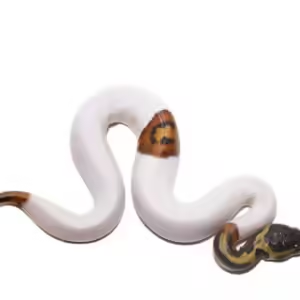
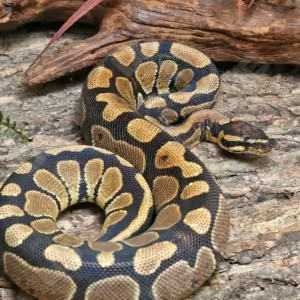



Reviews
There are no reviews yet.